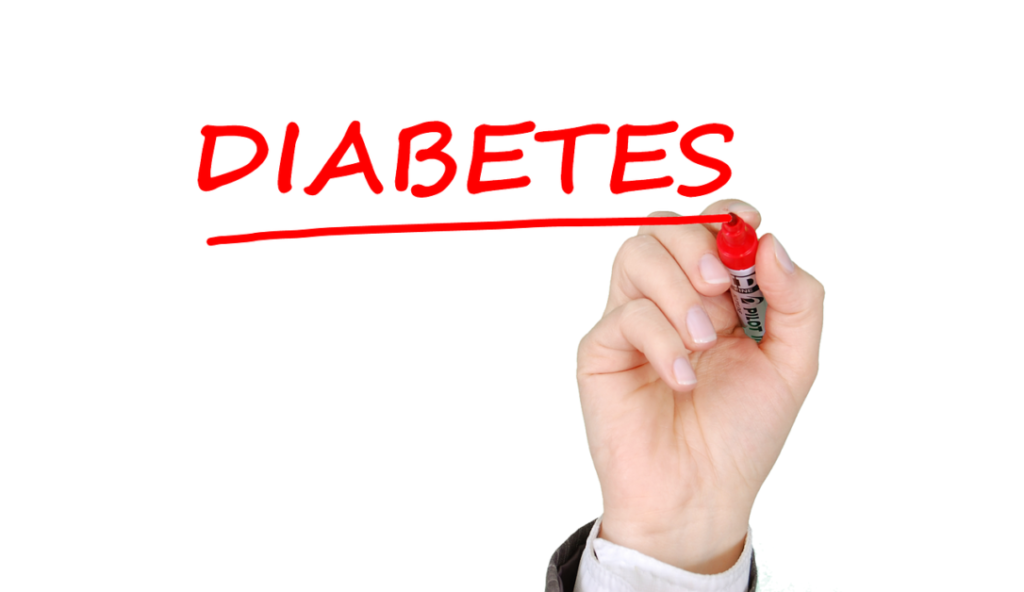Recognizing the Sudden Symptoms of Diabetes
Have you ever wondered if you or someone you know might be experiencing the sudden symptoms of diabetes? In this article, we will shed light on the signs to look out for and provide helpful tips and advice for those with diabetes or their loved ones. Whether you are concerned about your own health or wanting to support someone else, recognizing the sudden symptoms of diabetes is crucial in managing this condition effectively. So, let’s dive in and explore the world of diabetes symptoms together!
Table of Contents
Recognizing the Sudden Symptoms of Diabetes

Understanding the Importance of Early Recognition
Recognizing the sudden symptoms of diabetes is essential for early diagnosis and prompt intervention. Diabetes is a chronic condition that affects millions of people worldwide. If left untreated or undiagnosed, diabetes can lead to serious complications that can impact our overall health and quality of life. Therefore, it is essential to be aware of the signs and symptoms of diabetes, so we can seek medical help as soon as possible.
Impact of Delayed Diagnosis
Delayed diagnosis of diabetes can have significant consequences on our health. Diabetes affects our body’s ability to regulate blood sugar levels, leading to abnormally high or low levels. This can result in several complications, including heart disease, kidney problems, nerve damage, vision loss, and even amputations. By recognizing the sudden symptoms of diabetes and seeking timely medical attention, we can prevent or manage these complications effectively.
Types of Diabetes
There are primarily two types of diabetes: Type 1 and Type 2. Type 1 diabetes is an autoimmune disorder in which the body’s immune system mistakenly attacks and destroys the insulin-producing cells in the pancreas. This leads to a lack of insulin, requiring daily insulin therapy. On the other hand, Type 2 diabetes occurs when the body becomes resistant to insulin or does not produce enough insulin. This type of diabetes is often managed with lifestyle modifications, medication, and, in some cases, insulin therapy.
Signs and Symptoms of Diabetes
Recognizing the sudden symptoms of diabetes is crucial for early detection. Here are some common signs and symptoms we should be aware of:
1. Frequent Urination
Increased frequency of urination is one of the early signs of diabetes. The excess blood sugar that cannot be adequately absorbed by the body is excreted through urine, leading to increased urination.
2. Increased Thirst
Increased thirst, also known as polydipsia, is often associated with frequent urination. As the body loses fluids through excessive urination, we may experience intense thirst as the body tries to replenish the lost fluids.
3. Unexplained Weight Loss
Unexplained weight loss can be a symptom of both Type 1 and Type 2 diabetes. When the body cannot use glucose effectively, it starts breaking down fat and muscle for energy, resulting in unintended weight loss.
4. Fatigue and Weakness
Feeling excessively tired and weak, even after adequate rest, can be a sign of diabetes. The body’s inability to utilize glucose efficiently results in a lack of energy.
5. Blurred Vision
Blurry vision or difficulty focusing can be caused by high blood sugar levels. Changes in fluid levels in the eyes can affect our ability to see clearly, even leading to temporary vision loss.
6. Tingling or Numbness
Nerve damage, known as peripheral neuropathy, can occur in individuals with diabetes. This can lead to tingling, numbness, or a “pins and needles” sensation, usually in the hands and feet.
7. Slow-Healing Wounds
Diabetes affects our body’s ability to heal wounds. Even minor cuts or injuries may take longer to heal, and infections may occur more frequently.
Common Symptoms in Type 1 Diabetes
While some symptoms may overlap between Type 1 and Type 2 diabetes, there are a few distinct signs to look out for in Type 1 diabetes:
1. Rapid Onset of Symptoms
Symptoms of Type 1 diabetes often develop quickly, sometimes within a matter of weeks or even days. This sudden onset can be alarming for those affected and their loved ones.
2. Extreme Hunger
Despite consuming enough food, individuals with Type 1 diabetes may experience constant hunger. This is because the body is unable to properly utilize glucose for energy.
3. Irritability
Mood changes and irritability are common symptoms of Type 1 diabetes. Fluctuations in blood sugar levels can affect our emotions and behavior.
4. Yeast Infections
Yeast infections, particularly in women, can be more frequent and severe in individuals with Type 1 diabetes. This is due to the higher levels of glucose in the body, creating an ideal environment for yeast to thrive.

5. Difficulty Concentrating
High blood sugar levels can affect cognitive function, making it difficult to concentrate or focus on tasks.
6. Unusual Behavior
In some cases, Type 1 diabetes can cause bizarre or unusual behavior. This can include confusion, aggression, or uncharacteristic actions.
Distinct Symptoms in Type 2 Diabetes
While Type 1 and Type 2 diabetes share some symptoms, there are a few distinct signs to watch out for in Type 2 diabetes:
1. Gradual Onset of Symptoms
Unlike Type 1 diabetes, the symptoms of Type 2 diabetes tend to develop slowly over time. This gradual onset can make it easier to overlook or attribute to other factors.
2. Frequent Infections
Individuals with Type 2 diabetes may experience frequent infections, such as urinary tract infections, skin infections, or gum infections. High blood sugar levels weaken the immune system, making it harder for the body to fight off infections.
3. Darkened Skin
A condition called acanthosis nigricans can occur in individuals with Type 2 diabetes, causing darkened, velvety patches of skin. These patches typically appear in the folds and creases of the body, such as the neck, armpits, and groin.
4. Erectile Dysfunction
Men with Type 2 diabetes may experience erectile dysfunction due to nerve damage and poor blood circulation. This can significantly impact their quality of life and intimate relationships.
5. Increased Hunger
Similar to Type 1 diabetes, individuals with Type 2 diabetes may experience increased hunger, despite eating enough food. The body’s inability to utilize glucose efficiently leads to persistent hunger pangs.

Risk Factors to Consider
Recognizing the sudden symptoms of diabetes becomes particularly important if we have any of the following risk factors:
1. Family History
Having a close family member with diabetes increases our risk of developing the condition. Genetics play a significant role in the onset of diabetes.
2. Age
As we age, the risk of developing Type 2 diabetes increases. It is essential to monitor our health and be mindful of any sudden symptoms as we grow older.
3. Gestational Diabetes
Women who have had gestational diabetes during pregnancy are at a higher risk of developing Type 2 diabetes later in life. Monitoring our blood sugar levels and recognizing any sudden symptoms is crucial, especially if we fall into this category.
4. Obesity
Being overweight or obese significantly increases the risk of developing Type 2 diabetes. Adopting a healthy lifestyle and recognizing the sudden symptoms is crucial for managing this risk factor.
5. Sedentary Lifestyle
Physical inactivity and a sedentary lifestyle contribute to the development of Type 2 diabetes. Regular exercise and recognizing the sudden symptoms can help reduce this risk.
6. Ethnicity
Certain ethnic groups, such as African Americans, Hispanics, Asian Americans, and Native Americans, have a higher risk of developing diabetes. Being aware of this increased risk can help us recognize the sudden symptoms and seek appropriate medical care.
Steps to Take When Sudden Symptoms Arise
If we experience any of the sudden symptoms associated with diabetes, it is important to take the following steps:
1. Schedule an Appointment with a Healthcare Professional
When we notice any of the sudden symptoms, it is crucial to make an appointment with a healthcare professional. They will perform a thorough evaluation and order necessary tests to confirm a diabetes diagnosis.
2. Blood Tests for Diagnosis
Blood tests, such as fasting plasma glucose (FPG) and oral glucose tolerance test (OGTT), are essential for diagnosing diabetes. These tests measure blood glucose levels to determine whether we have diabetes and what type.
3. Lifestyle Modifications
Depending on the type and severity of diabetes, lifestyle modifications may be recommended. These may include adopting a healthy diet, engaging in regular physical activity, and maintaining a healthy weight.
4. Medication and Insulin Therapy
For individuals with Type 1 diabetes or more severe cases of Type 2 diabetes, medication or insulin therapy may be necessary. It is important to adhere to the prescribed treatment plan and monitor blood sugar levels regularly.
5. Regular Monitoring and Follow-ups
Regular monitoring of blood sugar levels and follow-up appointments with healthcare professionals are crucial for managing diabetes effectively. This ensures that the treatment plan is working optimally and any necessary adjustments can be made.
6. Diabetes Education and Support
Diabetes education and support play a vital role in managing the condition. Learning about diabetes, its management, and connecting with support groups can provide us with the knowledge and encouragement needed to live a healthy and fulfilling life with diabetes.
By recognizing the sudden symptoms of diabetes, understanding its types, symptoms, and risk factors, and taking prompt action when necessary, we can ensure early diagnosis and proper management of this chronic condition. Remember, our health is our responsibility, and being proactive about our well-being is key to leading a happy and healthy life.









